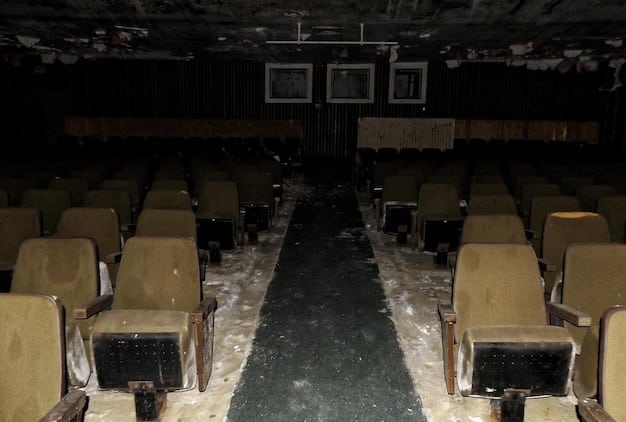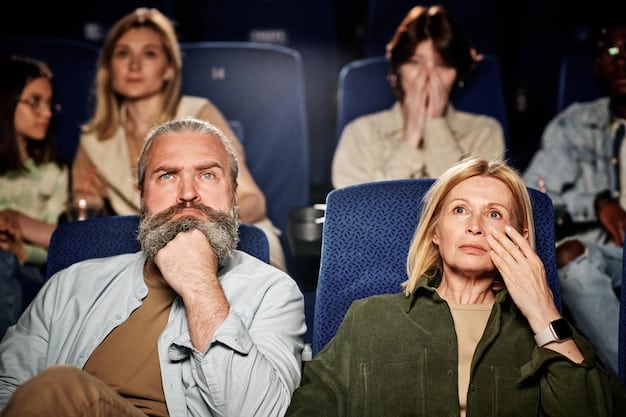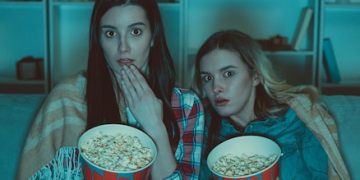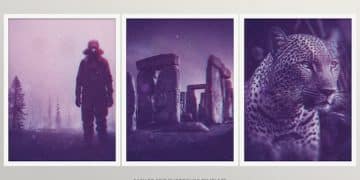Is the Sequel Curse Real? A Critical Review of Recent Movie Sequels

Is the sequel curse real? This article delves into the notion by examining three recent movie sequels, analyzing why they failed to capture the magic of their predecessors and exploring the common pitfalls that plague many follow-up films.
The allure of a sequel is undeniable. Capitalizing on established universes and beloved characters seems like a guaranteed win, but the cinematic graveyard is littered with sequels that failed to live up to the hype. **Is the sequel curse real?** Let’s explore this question by examining three recent movies that missed the mark, analyzing what went wrong and why.
The Perils of the Sequel: Exploring the “Curse”
The concept of a “sequel curse” has long been a talking point among film enthusiasts and industry professionals alike. But is it merely a myth, or is there a tangible reason why so many sequels disappoint? Initial success can create unrealistic expectations, setting the stage for potential letdowns.
The Weight of Expectation
The original film often benefits from novelty and surprise. Sequels, however, inherit the burden of pre-existing fan expectations, constantly being compared to the source material and facing scrutiny regarding their faithfulness and originality.
Creative Fatigue and Formulaic Storytelling
Sometimes, the creative team behind a sequel struggles to recapture the spark that made the original so compelling. Ideas may seem repetitive, and the pressure to deliver can lead to predictable, formulaic storytelling.

The sequel curse is not necessarily a supernatural phenomenon. Instead, it is a combination of high expectations, creative stagnation, and the potential for studio interference, causing the downfall of many sequels.
Case Study 1: “Indiana Jones and the Kingdom of the Crystal Skull” (2008)
“Indiana Jones and the Kingdom of the Crystal Skull” arrived almost two decades after “Indiana Jones and the Last Crusade,” carrying immense expectations. Unfortunately, many fans and critics felt that it failed to capture the spirit of the original trilogy. What went wrong?
The movie’s main problem might be the over-reliance on CGI and outlandish plot elements, like interdimensional beings and a refrigerator-proof nuclear blast, strained credibility and differed from the grounded adventures of the previous installments.
What Went Wrong?
- Over-Reliance on CGI: The practical effects and stunt work that defined the original trilogy were largely replaced by CGI, resulting in a visually jarring experience for many viewers.
- Unbelievable Plot: The shift to science fiction elements, with crystal skulls and aliens, felt out of place and weakened the film’s connection to the historical and archaeological themes of the previous movies.
- Character Choices: Mutt Williams, played by Shia LaBeouf, was a controversial addition to the cast.
The lesson we learn here is that honoring the source material’s spirit while still trying new things is crucial, even though it presents a big challenge. “Kingdom of the Crystal Skull” showed how important it is to respect the legacy and understand its original appeal in order to create a good sequel.
Case Study 2: “Highlander II: The Quickening” (1991)
“Highlander” (1986) became a cult classic because of its original premise, great soundtrack, and interesting characters. However, the sequel, “Highlander II: The Quickening,” veered so far from the original material that it is a popular example of a sequel completely missing the mark. How did this happen?
The sequel introduced completely new lore, claiming that the immortals were aliens from the planet Zeist, exiled to Earth. This change invalidated everything that made the original “Highlander” unique. Also, the messy storyline and mediocre effects made things worse.
Key Issues
- Retconning Established Lore: The alien origin story contradicted the mythical and grounded nature of the original’s immortals.
- Poor Execution: The special effects and action sequences were subpar, lacking the visual flair of the first movie.
- Incoherent Story: Confusing plot points and a lack of clear direction left viewers scratching their heads.

“Highlander II” is a case study in how NOT to make a sequel. You can’t just throw out what everyone loved about the first movie. It’s essential to treat source material with respect to keep the audience’s trust and make sure they enjoy the story.
Case Study 3: “Dumb and Dumber To” (2014)
After 20 years, “Dumb and Dumber To” was intended to bring back the childlike humor and silly antics of Lloyd and Harry. While it did have its moments, many felt that it didn’t live up to their memories of the first film. What about this one went wrong?
The humor from the first movie didn’t translate very well to current sensibilities. Some people thought some of the jokes in “Dumb and Dumber To” were insensitive. The storyline seemed forced and tried too hard to capture the magic, instead of organically using the characters’ personalities.
Why It Faltered
- Dated Humor: What was funny in 1994 didn’t necessarily resonate in 2014, with some jokes feeling insensitive or out of touch.
- Forced Story: The plot felt contrived, relying too heavily on callbacks to the original rather than forging its own identity.
- Nostalgia Trap: The movie relied too much on nostalgia, assuming that simply bringing back the original characters would be enough to guarantee success.
If you’re going to revive a beloved classic, know that what made it great in first place might not play as well today. Being self-aware, growing with our audience, and innovating are all essential to reviving something that was already great.
Common Pitfalls of Sequels
Looking at these examples, some things tend to go wrong when movies are made into sequels. How do you keep from making these mistakes?
One of the biggest pitfalls is losing sight of what made the original special. Sequels need to carry on the best parts of the first movies, while still being creative and not just doing the same thing over again.
Avoiding the Curse
- Understanding the Original: Developers should try to understand what the magic was and translate that into the sequel.
- Balancing Nostalgia and Innovation: Respect the original material while adding new ideas and elements.
- Maintaining Creative Integrity: Resist pressure to make money as opposed to creating something meaningful and great.
The “sequel curse” is real, and staying away from these kinds of mistakes can really enhance the chance that a follow-up movie will do well and satisfy fans and critics alike.
The Power of Good Sequels
Despite all the possible traps, lots of sequels have done better than the first movies. What do these films do differently that makes them so successful?
Great sequels grow on what came before, adding to the characters, storylines, and world-building in interesting ways. Also, having a clear vision and a passion for offering something fresh and authentic is something that good movie sequels always have.
Hallmarks of Successful Sequels
- Character Development: Sequels provide opportunities to deepen and evolve characters, allowing audiences to connect with them on a deeper level.
- World Expansion: Sequels allow you to explore more of the universe, growing the scope and giving fans much more to get excited about!
- Meaningful Storytelling: Great sequels avoid feeling repetitive by introducing new themes and narrative arcs that enhance the overall story.
Good movies can live on in the form of sequels, which help the old movies continue to capture the imagination of viewers for years to come. Sequels keep the story alive and add to the impact of the original concept.
Breaking the Cycle: How to Make a Great Sequel
Making a great sequel calls for careful planning, creative ideas, and a deep respect for what came before. Instead of considering it a curse, filmmakers can use the sequel as an opportunity to grow, explore, and take viewers to new heights.
By being aware of the most typical mistakes, honoring what came before, and daring to try new things, filmmakers can avoid the “sequel curse” and provide us with movies we’ll never forget.
Strategies for Success
- Stay True to the Source: Understand why people liked the first one and keep those key parts in the sequel.
- Innovate and Evolve: Add new ideas, storylines, and characters that continue the story and make it relevant to today’s audiences.
- Focus on Quality: Put excellence before profits, and value your creators’ vision.
The sequel curse may be avoided and cinematic history redefined by understanding these concepts and putting them into practice. The ability to develop great sequels is a gift to both the filmmakers and the viewers; it provides opportunities to broaden, explore, and advance tales that have already struck a chord.
| Key Point | Brief Description |
|---|---|
| 🤔 The Sequel Curse | Many sequels fail due to high expectations and creative hurdles. |
| 🎬 Indiana Jones 4 | Over-reliance on CGI and a far-fetched plot disappointed many fans. |
| 👽 Highlander II | Retconning the original lore with an alien origin story was a major misstep. |
| 😂 Dumb and Dumber To | Dated humor and a forced story failed to capture the original’s magic. |
Frequently Asked Questions About the Sequel Curse
▼
The “sequel curse” refers to the phenomenon where sequels fail to meet the quality and critical success of their original films, often disappointing fans and critics alike.
▼
Sequels often struggle due to inflated expectations, creative fatigue, studio interference, and the difficulty of recapturing the novelty and surprise of the original movie.
▼
Filmmakers can avoid the curse by understanding the original’s appeal, balancing nostalgia with innovation, maintaining creative integrity, and focusing on high-quality storytelling.
▼
Successful sequels include “The Empire Strikes Back,” “The Godfather Part II,” and “Terminator 2: Judgment Day,” which expanded on their predecessors’ worlds and characters in meaningful ways.
▼
No, the sequel curse is not inevitable. With careful planning, creative vision, and a deep understanding of the source material, filmmakers can create sequels that surpass or equal the quality of the originals.
Conclusion
So, is the sequel curse real? The answer is complex. While it’s not a mystical force, the challenges sequels face are significant. By understanding the pitfalls and embracing strategies for success, filmmakers can break the cycle and deliver sequels that not only meet expectations but exceed them, enriching the cinematic landscape for years to come.





